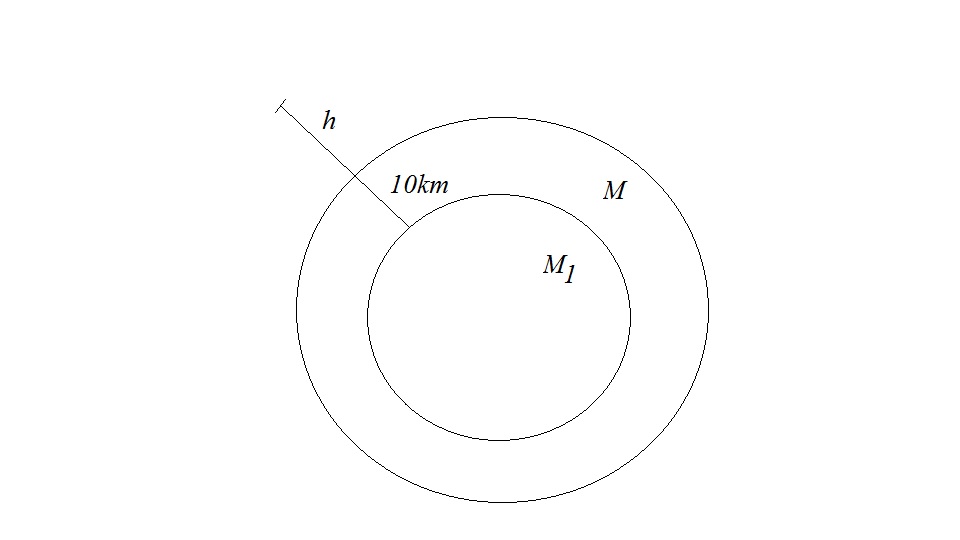The idea of this problem is that you need to use the fact that the gravitational acceleration, #g#, decreases as you move away from the surface and as you move towards the center of the planet.
At the surface, the gravitational acceleration is given by this equation
#g = G * M/r^2#, where
#r# - the radius of the Earth;
At a distance equal to #h# above the surface, the gravitational acceleration will be
#g_h = G * M/(r + h)^2#
The trick here is to divide this value by the value of #g# at the surface
#g_h/g = (cancel(G) * cancel(M)/(r + h)^2)/(cancel(G) * cancel(M)/(r ^2)#
#g_h/g = r^2/(r + h)^2#
Now, when #h# is much smaller than #r#, you can write this expression like this
#g_h/g = [(r + h)^2/r^2]^(-1) = [((r + h))/r]^(-2) = (1 + h/r)^(-2)#
Use binomial expansion to write this as
#(1+h/r)^(-2) = 1 + (-2) * h/r + ((-2) * (-3))/(2!) * (h/r)^2 + ((-2) * (-3) * (-4))/(3!) * (h/r)^3 + ...#
#(1 + h/r)^(-2) = 1 - (2h)/r + 3(h/r)^2 - 4(h/r)^3 + ...#
Since #h# is much smaller than #r#, you can approximate this to be equal to
#(1 + h/r)^(-2) ~~ 1 - (2h)/r#
The gravitational acceleration at a height #h# above sea level will thus be
#g_h = g * [1-(2h)/r] " "color(blue)((1))#
At a distance #d# below the surface, the gravitational acceleration will be
#g_d = G * M_d/(r - d)^2#, where
#M_d# - the mass of the Earth that actually attracts the body.
SInce you're below the surface, not all the mass of the Earth will contribute to the value of #g_d#. This happens because your object is now attracted by a sphere that has a smaller radius, i.e. #(r-d)#.
Assuming that Earth's density is constant, you can write
#rho = M/V => M = rho * V#
#M_d = rho * underbrace(4/3pi * (r-d)^3)_(color(green)("volume of a sphere"))#
This means that #g_d# will be equal to
#g_d = G * (rho * 4/3pi (r-d)^cancel(3))/cancel((r-d)^2) = G * 4/3pi * rho * (r-d)#
Once again, divide this by the value of #g# at the surface to get
#g = G * M/r^2 = G * (rho * 4/3pi * r^(cancel(3)))/cancel(r^2) = G * 4/3pi * rho * r#
#g_d/g = (cancel(G * 4/3 pi * rho) * (r-d))/(cancel(G * 4/3pi * rho) * r) = (r-d)/r = 1 - d/r#
The gravitational acceleration at a distance #d# below the surface will thus be
#g_d = g * (1 - d/r) " "color(blue)((2))#
Now all you have to do is set these two equations equal to each other and solve for #h#
#color(blue)((1) = (2)) => g_h = g_d#
#cancel(g) * (1 - (2h)/r) = cancel(g) * (1 - d/r)#
This is equivalent to
#(2h)/cancel(r) = d/cancel(r) => h = d/2#
In your case, #d# is equal to 10 km, therefore
#h = "10 km"/2 = color(green)("5 km")#



